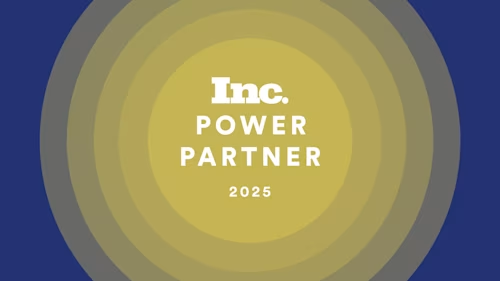
Can Computers Think?
By studying the relationship between human and computer intelligence, Turing opened the door for AI to permeate our everyday lives and accelerate innovation.

British Mathematician Alan Turing is considered to be the father of theoretical computer science and artificial intelligence (AI). He was also the first to ask the question, “Can computers think?”
In his seminal 1950 paper, Computing Machinery and Intelligence, he introduced the Turing Test, which involves a human asking questions to another human and to a computer. The human being questioned and the computer both communicate with the questioner from a separate room through a computer terminal. If the questioner is unable to tell which of the respondents was the human and which was the computer, the computer has passed the Turing Test.[1]
Turing speculated that by the year 2000, computers would be able to pass his test. As of 2022, no computer has yet passed the Turing Test. However, artificial intelligence continues to develop in very unexpected and useful ways and has revolutionized enterprise business processes.
Docusign is continuing to develop AI for contract search and analysis. We’re not trying to pass the Turing test — but we do hope to make contract management a little smarter. But let’s take a look at what AI is, what it isn’t, and how it is changing contracts from creation to negotiation and beyond.
Artificial intelligence today
The artificial intelligence of science fiction has painted an unrealistic picture of what we mean when we talk about artificial intelligence in the 21st century. Modern artificial intelligence systems look nothing like the AI of science fiction, such as HAL 9000 or Lt. Commander Data, who communicate verbally and even pass the Turing Test (except for the inability to use contractions).
Real AI is software that uses mathematical principles to perform tasks that can make life easier for humans. AI is a system that can process vast amounts of data in which patterns exist, and build models from processing that data. AI can then detect patterns, based on those models, when analyzing new data sets, that humans would otherwise have a vast amount of difficulty detecting. Just imagine if you had 100,000 contracts lying around and you were asked to find out what risks are in those contracts. How many people would you need to review that volume of contracts to find the answers?
How AI is changing contracts
AI has been a boon for business processes. Contract AI capabilities like those within Docusign CLM+ are designed specifically to help organizations improve efficiency, reduce risk and uncover opportunity throughout the contract management lifecycle.
Contract AI doesn’t use human reason or judgment to complete these tasks. Instead, it uses machine learning, natural language processing and other related technology like latent semantic indexing (LSI), to identify, extract and analyze business and legal terms.
This level of technology expands and improves on simpler forms of text analysis like keyword search. While a search engine takes a word or phrase entered by the user and returns the instances of those terms within a document, well trained contract AI systems provides concept based searching to find all text that is relevant within the context of the search, regardless of whether the exact search term appears within the text. The ability to find and analyze text based on concept opens the door to additional types of analysis and capabilities well beyond search.
For more detailed information about how contract AI works, read Understanding the Role of Artificial Intelligence in Contract Analysis.
Streamline analysis
Historically, to understand which agreements may have been impacted by regulatory changes, a team of people would spend hours–or days–reading through an organization’s contracts from top to bottom to identify which agreements required action and which didn’t and more time categorizing and prioritizing them. In other words, a group of humans would spend multiple on-the-clock hours sifting through contracts instead of having time to think for creativity, reasoning or other tasks that drive business goals.
With a contract AI enabled system of agreement, an organization can utilize the pattern recognition capabilities of the specially trained AI models to identify which agreements are subject to the relevant regulatory oversight and which are not. AI models are available to search for language that is relevant to topics, such as:
Governing law, jurisdiction and dispute resolution
Limitation of liability
Force majeure and continuity of business
Data privacy and security
Assignment and change of control
These are just a few of many key data points whose presence or absence can be identified and returned so the user can answer the question, “Do we need to do something about this legal or business requirement?”
Understand your contracts
Even when contract language is standardized across an organization, a simple keyword search is insufficient for most contract analysis use cases. For example, if an organization wants to understand how supplier relationships are impacted in case of a catastrophic event, a contract AI enabled system can find and return all force majeure clauses across supplier contracts, regardless of whether the specific term “force majeure” actually appears in those clauses.
Contract AI analysis is also quickly verifiable in ways that are simply impractical or impossible with human analysis. As a computer system that produces statistically measurable results, organizations can configure their contract AI to effectively supplement their legal and contract teams’ expertise.
Negotiate better
Contract AI analyzes contracts based on parameters set by the organization using it. This makes it an extremely helpful tool when negotiating a contract. The contract AI system reduces risk from human error while also speeding up the analysis process by:
Extracting clauses and terms of incoming agreements
Applying logic to rank the risk level of extracted sections based on your organization’s own pre-set parameters
Identifying potentially risky terms and recommending replacement language from your organization’s pre-approved clause library
A contract AI system won’t tell you what makes a deal fair or what level of risk is tolerable. But when used as one step in the negotiation process, it can use the parameters your organization sets to quickly and reliably give you the information you need to use your team’s human brains to make these decisions.
So, can computers think?
The philosophical questions about what constitutes thought, sentience, and consciousness are best left to philosophers. Even so, we can very confidently say: the answer is no. The Artificial intelligence systems of 2022 can’t think.
Contract AI computerizes the tedious and laborious tasks associated with contract analysis. This speeds up the analysis process and gives you time to think.
If you’re curious about how Docusign AI can help your organization, contact us today.

Related posts
Docusign IAM is the agreement platform your business needs



